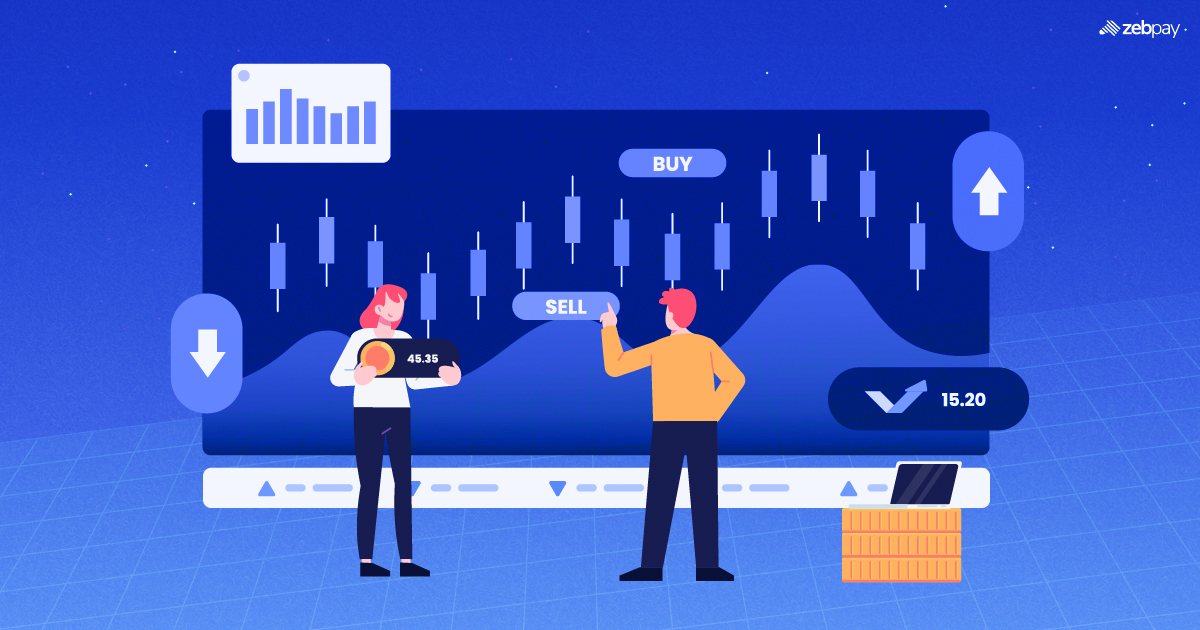Investing in crypto has become increasingly popular lately, drawing in both beginners and experienced investors alike. The crypto market is known for its exhilarating ups and downs, with prices in constant flux. This volatility can pose a challenge for investors trying to determine whether to hold onto their investments for the long term (HODLing) or to engage in day trading. This article aims to compare the two strategies, delving into their distinctions, advantages, disadvantages, and profit potentials.
Introduction to Day Trading
Day trading in crypto entails opening and closing positions within the same day to capitalize on minor price shifts. It’s a brief trading approach demanding constant market surveillance and swift decision-making. Day traders rely on technical analysis and indicators to spot trading prospects and execute buy or sell orders promptly. The goal of this strategy is to exploit the crypto market’s volatility, as prices can change swiftly within a day.
Read more: How To Pick A Crypto For Day Trading
Introduction to Hodling
Long-term crypto hodling is commonly adopted by investors with more conservative risk tolerance. They purchase and retain a coin for extended periods, ranging from weeks to months or even years. “Hodling” is a well-known term in crypto jargon, meaning “hold onto your dear life.” Essentially, it advises traders to maintain their assets regardless of market conditions. Crypto holders typically resist selling and remain unaffected by daily price fluctuations.
Holding onto investments offers a relatively safer strategy compared to frequent daily trading, reducing investors’ vulnerability to short-term market fluctuations. Long-term holders employ various strategies to diversify their portfolios, allowing the market to move as it will and respond accordingly.
Read more: Crypto Trading Strategies
Day Trading vs. Hodling: What’s the Difference?
Long-term traders, also known as position traders, take a holistic view of the market before initiating trades based on their analysis. They often maintain positions for days or weeks, requiring patience to wait for returns to materialize.
Conversely, short-term traders encompass day traders, who open and close positions swiftly. Day traders employ various strategies, like scaling or arbitrage trading, to secure modest profits within a brief timeframe.
Ultimately, both long-term trading and short-term trading offer distinct advantages and drawbacks. The decision between day trading and hodling depends on factors such as risk tolerance, available capital, and profit objectives. Here are the benefits and drawbacks of each approach:
Benefits and Drawbacks: Day Trading vs. Hodling
Advantages of Day Trading
- Potential for substantial profits through leveraged positions
- Ability to generate profits irrespective of market conditions
- Faster profits
- Greater flexibility
Disadvantages of Day Trading
- Risk of emotional decision-making leading to overinvestment
- Difficulty in maintaining self-discipline
- High-leverage positions can result in significant losses.
- Constant market analysis and attention are required.
Advantages of Hodling
- More time is available for asset analysis
- Long-term hodling reduces trading risks and avoids exposure to short-term price fluctuations
- Mitigation of emotional factors like Fear of Missing Out (FOMO) and Fear, Uncertainty, and Doubt (FUD)
Disadvantages of Hodling
- Crypto traders may feel trapped during bear markets, leading to impulsive selling, especially at a loss.
- Limited profits for traders with minimal capital
- Long-term hodling carries inherent risks, as some assets may lack strong potential and support.
- There are many security concerns, and choosing a highly secure crypto exchange is crucial to preventing common hacks and breaches.
Read more: Crypto Investing vs Crypto Trading
Hodling vs Day Trading: Profit Potential
For new investors seeking a low-risk investment strategy with long-term objectives, hodling might be the right choice. By adopting the hodling approach, you can sidestep the anxieties caused by short-term price fluctuations and concentrate on the enduring prospects of the crypto market.
Conversely, if you’re a seasoned investor aiming for higher returns or have shorter investment horizons, trading could be more suitable. Through trading, you stand to potentially achieve greater profits compared to holding, but with heightened exposure to risk. Alternatively, adopting a balanced strategy may offer a solution where you designate a portion of your portfolio for hodling to capitalize on long-term potential while allocating another portion for trading to exploit short-term opportunities.
Whichever path you embark upon, conducting thorough research, staying well-informed, diligently managing risk, and refraining from investing more than you can afford to lose are paramount principles in the crypto world.
Read more: Can Chart Patterns Help with Crypto Trading
Conclusion
While navigating crypto markets presents its challenges, many day- and long-term traders perceive them as avenues for profit generation, research opportunities, and market education. Hodlers typically maintain their coin holdings regardless of market conditions, while day traders engage more actively, leveraging short-term profits and mitigating volatility risks.
Ultimately, the decision between day trading and long-term investing in crypto hinges on individual objectives, risk appetite, and time availability. For those possessing the requisite skills, resources, and readiness to actively manage investments and embrace elevated risk levels, day trading may present a viable option. Conversely, individuals inclined towards a more passive approach, willing to endure potential long-term gains, and seeking to minimize short-term market volatility may find long-term investing to be a more suitable fit.
If you found this blog to be useful, do share it with other like-minded crypto enthusiasts. Click on the button below to begin your crypto trading journey using ZebPay.







